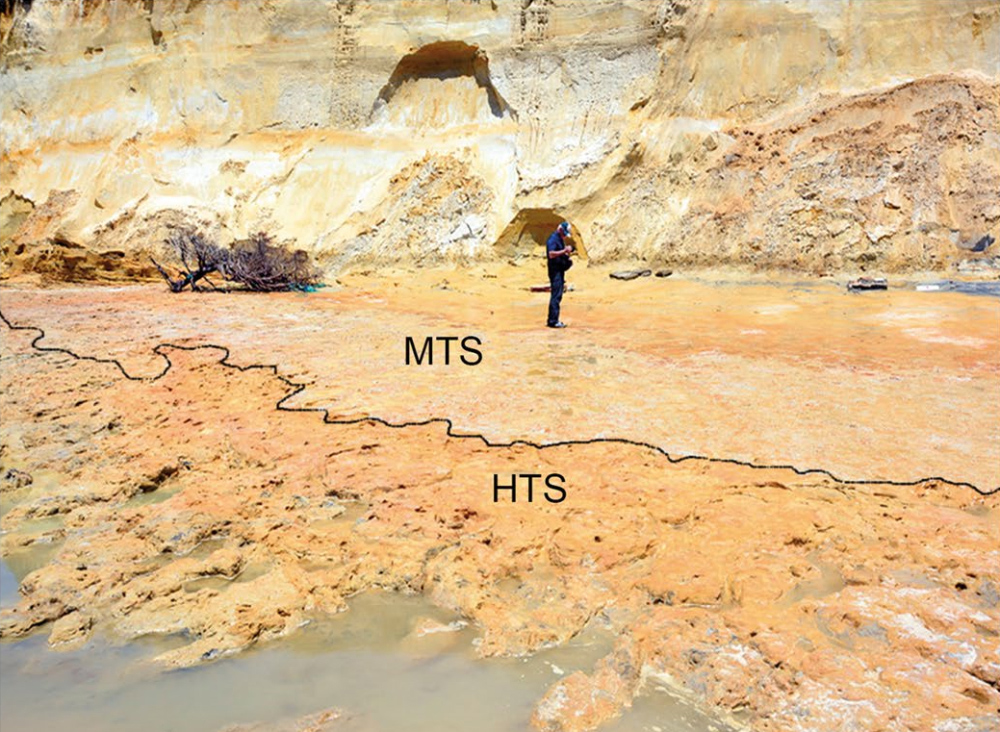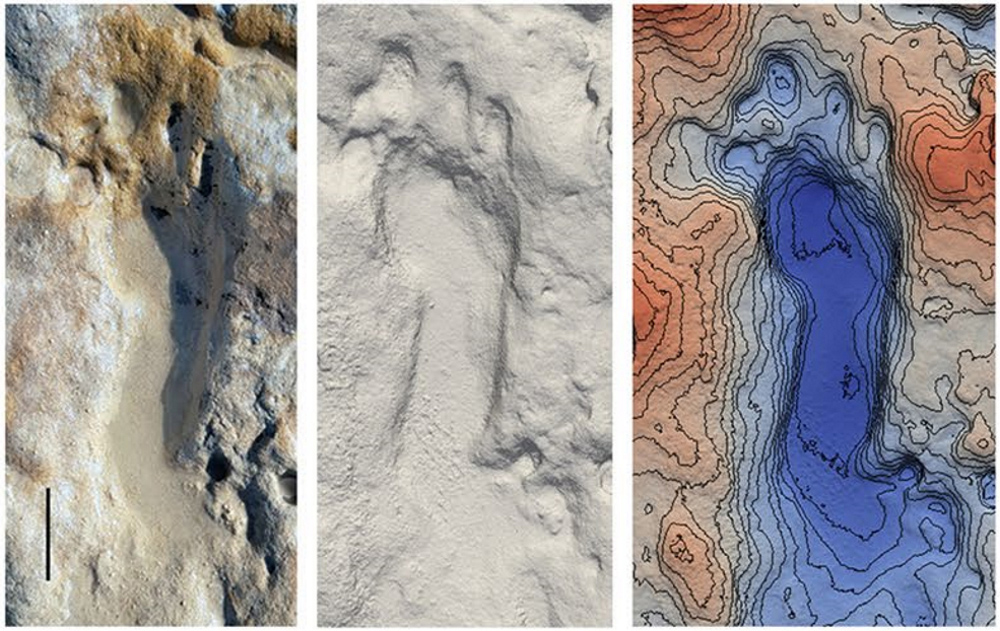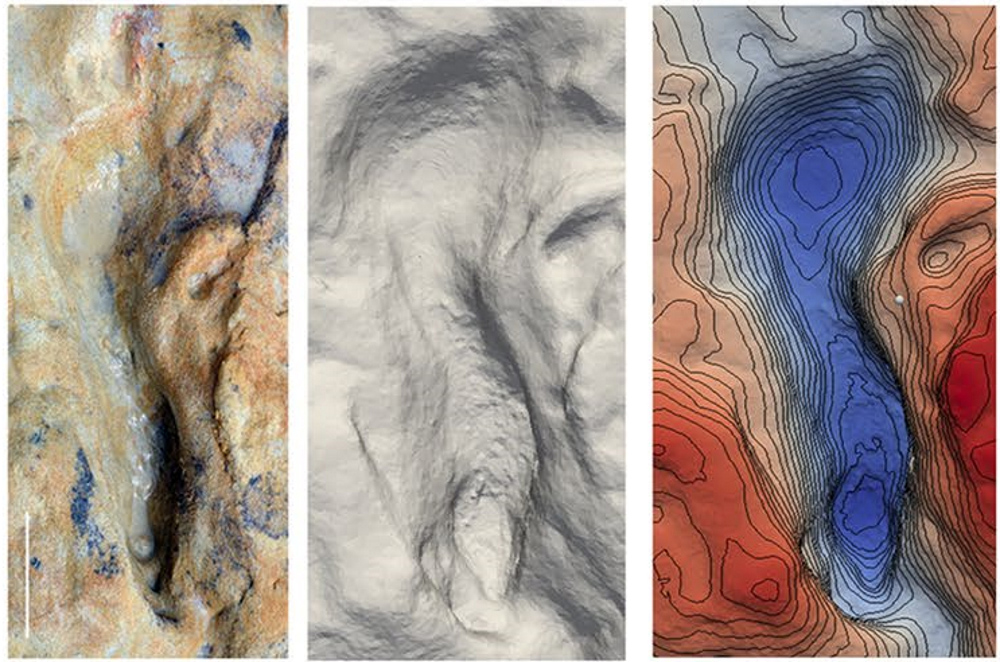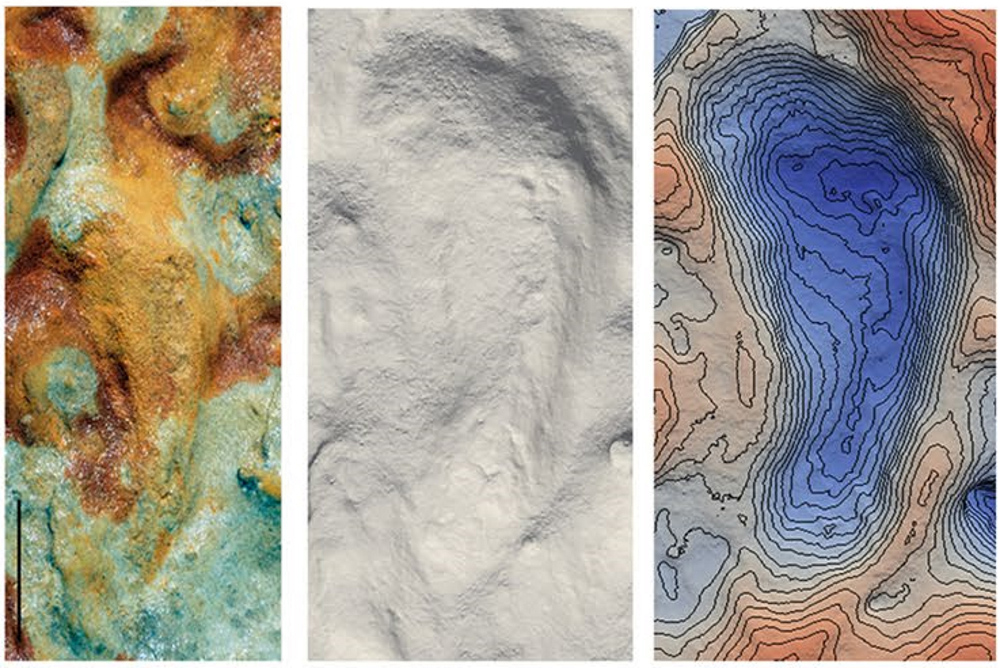100,000-year-old Neanderthal footprints show children playing in the sand
They could be Europe's oldest.

Some 100,000 years ago, an extended family of 36 Neanderthals walked along a beach, with the kids jumping and frolicking in the sand, scientists report after analyzing the beachgoers' fossilized footprints in what is now southern Spain.
"We have found some areas where several small footprints appeared grouped in a chaotic arrangement," said Eduardo Mayoral, a paleontologist at the University of Huelva and lead author of the study, which was published online March 11 in the journal Scientific Reports.
The footprints "could indicate an area of passage of very young individuals, as if they were playing or loitering on the shore of the nearby waterlogged area," Mayoral told Live Science in an email.
Related: See photos of our closest human ancestor
In June 2020, two biologists discovered the tracks on Matalascañas beach, in Doñana National Park, after a period of intense storms and high tides.
The biologists first saw fossilized animal tracks; some of the footprints were made long ago by large animals, like deer or wild boars, Mayoral said.
Only later, after Mayoral's team analyzed the prints, did anyone realize that some were Neanderthal footprints, he said. "Nobody recognized the existence of the hominid footprints at that time, which were only discovered by my team two months later, when we began to study the whole surface in detail."
Sign up for the Live Science daily newsletter now
Get the world’s most fascinating discoveries delivered straight to your inbox.
Ancient footprints
Mayoral and his colleagues identified 87 Neanderthal footprints in the sedimentary rock on the beach at Matalascañas. (The researchers determined those prints were made by 36 individuals.)
The exposed surface dates to the Upper Pleistocene period, roughly 106,000 years ago, when ancient stone tools discovered nearby show the region was inhabited by Neanderthals (Homo neanderthalensis). These hunter-gatherers lived in Europe and the Middle East between 400,000 and 40,000 years ago, while early modern humans (Homo sapiens) arrived there about 80,000 years ago. The researchers think the tracks could be the oldest Neanderthal footprints ever found in Europe.
At the time the footprints were made, the now-exposed surface appears to have been along the shore of a watering hole slightly inland from the coast, which was farther south back then than it is today, Mayoral said.
"Probably the water would not have been fresh but somewhat brackish, since we have found evidence of sea salt crystals (halite) on the surface where the footprints are found," he wrote in the email.
Related: In photos: Neanderthal burials uncovered
The team photographed the site extensively with an aerial drone and digitally scanned each of the fossilized human footprints in three dimensions.
The sizes and distribution of the footprints suggest they were made by a group of 36 Neanderthal individuals who were probably related, including 11 children and 25 adults — five females, 14 males and six individuals of undetermined sex.
"It can be established by correlation with other European sites that there is a direct relationship between the size of a footprint and the age of the individual who produced it," Mayoral said.
Most of the beach-walking adults would have stood between 4 and 5 feet (1.3 to 1.5 meters) tall, but four prints seem to have been made by an individual who was over 6 feet (1.8 m) tall. That's taller than the expected height of Neanderthals, so the print may have been made by a shorter individual with a heavy gait, the researchers wrote.





Playing in the sand
Of particular interest are the two smallest footprints, approximately 6 inches (14 centimeters) long, that are thought to have been made by a child about 6 years old. They are among several footprints grouped chaotically in some areas, possibly because the Neanderthal children were playing in the sand on the shore of the watering hole, Mayoral said.
Analysis of the tracks shows that most of the footprints are located on the edge of the flooded area, but the individuals who made the prints did not move entirely into the water, the researchers wrote.
"This could involve a hunting strategy, stalking animals in the water [such as] waterbirds and waders or small carnivores," they wrote.
The tracks might also have been made by people fishing in the water hole or searching for shellfish; evidence of similar hunting-and-gathering behavior by Neanderthals has been reported at other ancient sites.
Stone tools attributed to Neanderthals have turned up at nearby sites, but in those cases, there was no direct evidence — such as Neanderthal bones or teeth — to confirm their presence, Mayoral said.
That made the fossilized footprints especially important, the researchers wrote: "The biological and ethological information of the ancient hominin groups when there are no bone remains, is provided by the study of their fossil footprints, which show us certain 'frozen' moments of their existence."
The footprints were "unquestionable proof of these hominids' existence in the south of the Iberian Peninsula and, specifically, in this area of the Andalusian coast," Mayoral said.
Originally published on Live Science.
Tom Metcalfe is a freelance journalist and regular Live Science contributor who is based in London in the United Kingdom. Tom writes mainly about science, space, archaeology, the Earth and the oceans. He has also written for the BBC, NBC News, National Geographic, Scientific American, Air & Space, and many others.










